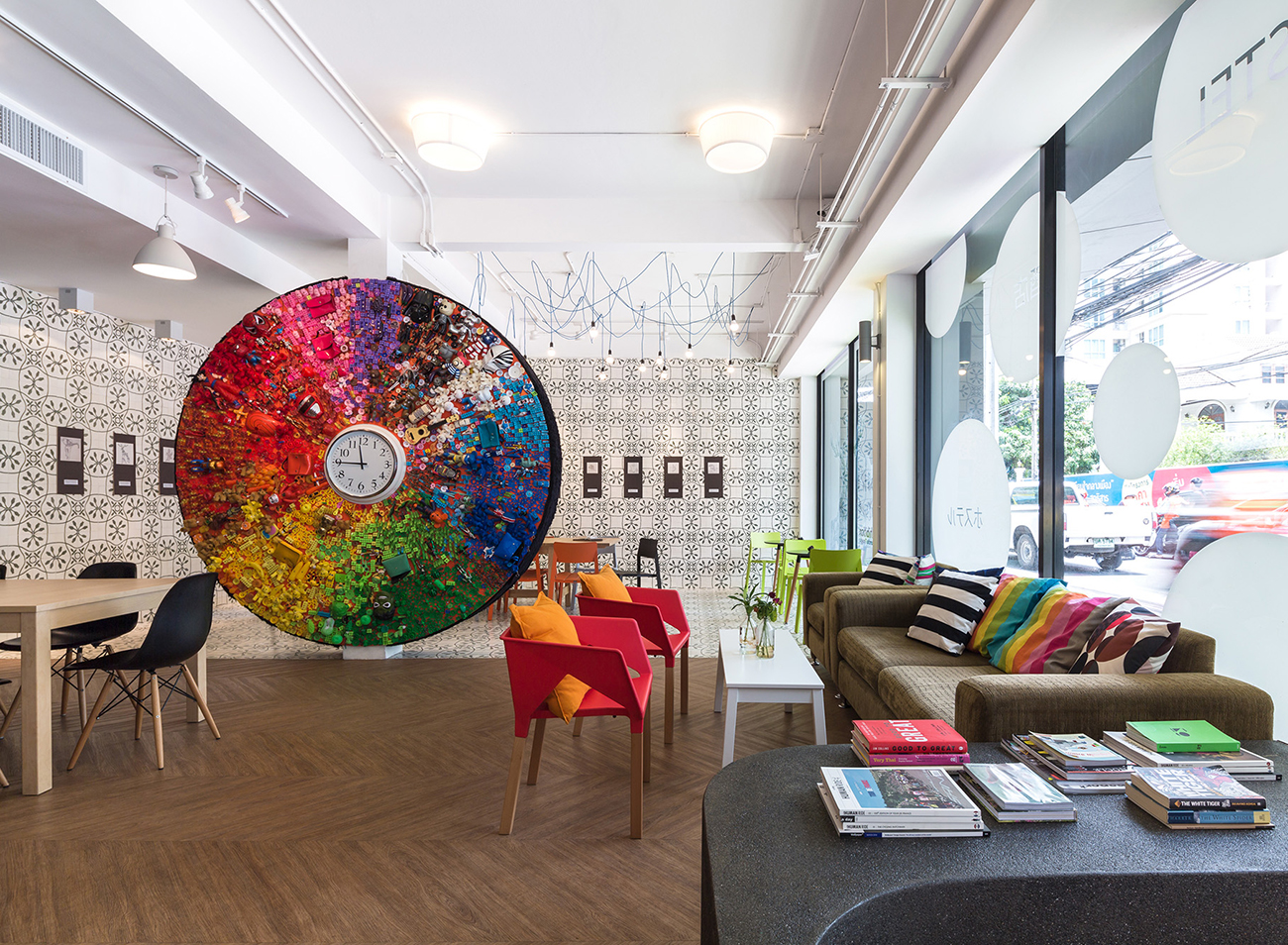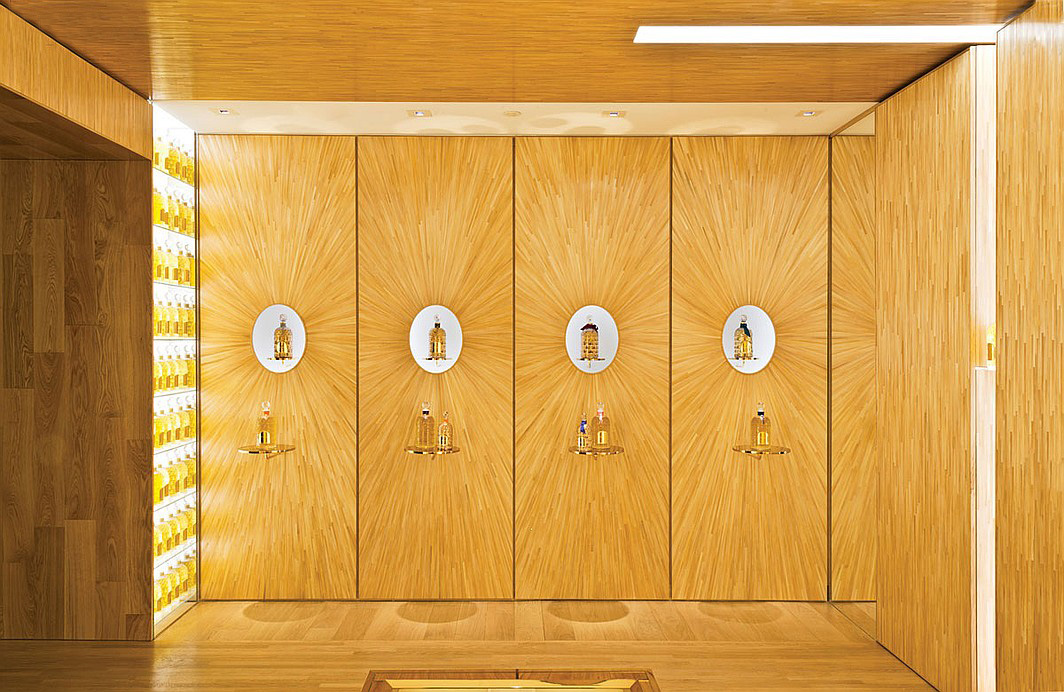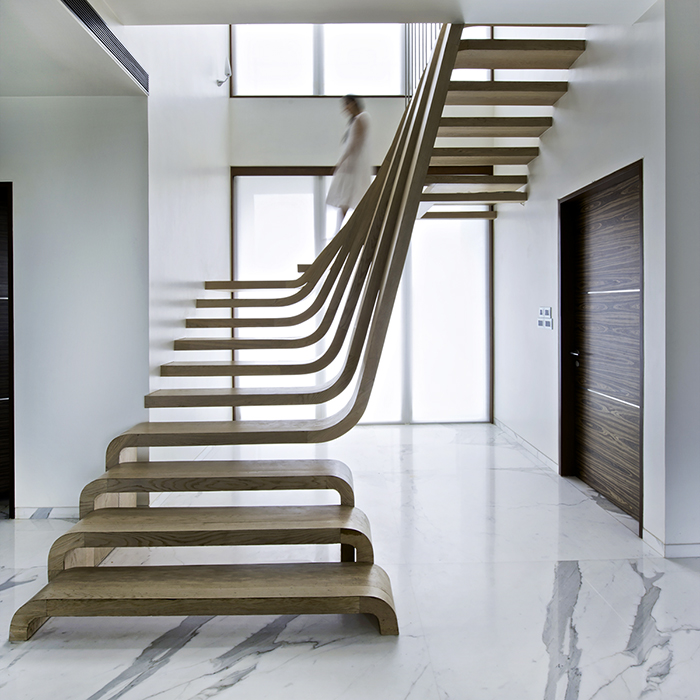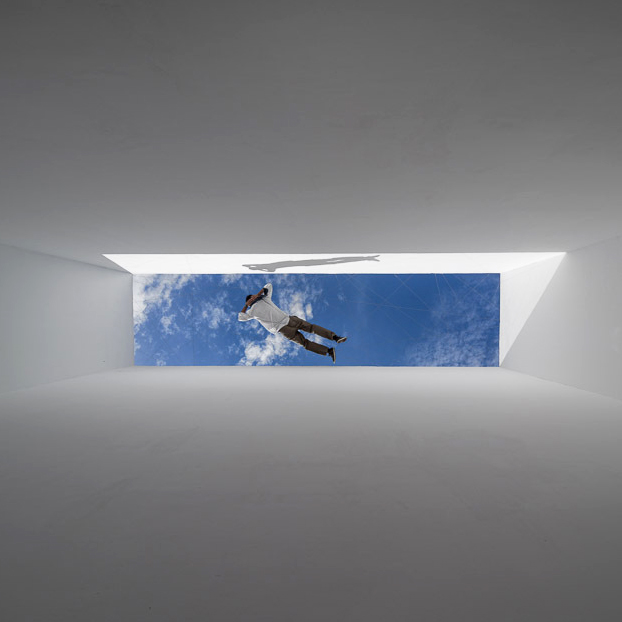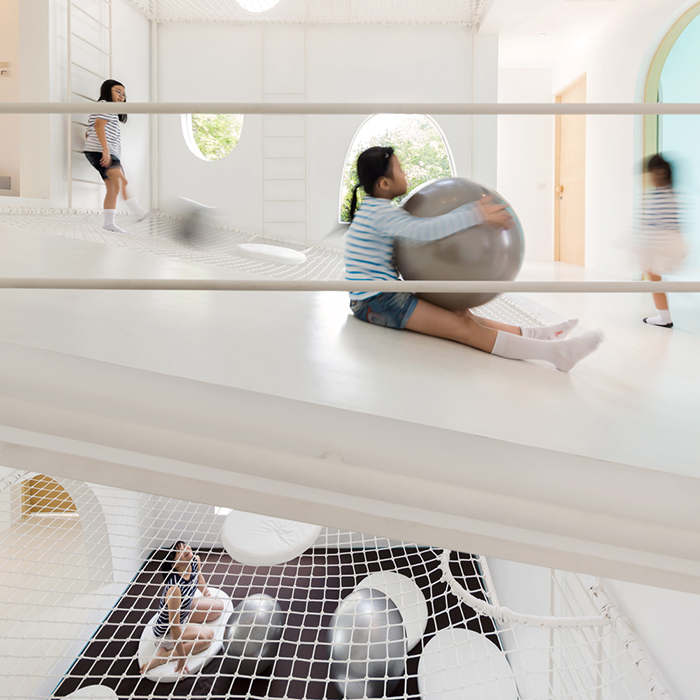Smile, Bangkok: Yim Huai Khwang Hostel Offers an Experience, not Just a Mattress
/The bustling Huai Khwang district in central Bankgok is witness to the renovation of a former condominium and sales building into the Yim Huai Khwang Hotel. Designed by Supermachine, the multi-disciplinary and unconventional Thai studio (they blog their projects, rather than display them on a portfolio website) that handles a wide range of projects, Yim Huai Khwang is the flagship branch of a young couples’ dream of opening a chain of hostels offering modern travelers a unique and affordable experience, not just an affordable bed to sleep in.
Yim—Thai for “smile”—builds on, not up, from existing urban infrastructure. The building in which it resides has been archived, “archiving” meaning that it utilizes a design that makes the building look different while leaving its older elements intact. The facade retains the modernist expression of its prior tenants and communicates a strong impression of its time, while the subtle film of of industrial grime decorating the buildings between which the hostel is nestled adds a grungy urban charm that befits the world traveler’s brief though memorable respite in Bankgok.
The interior juxtaposes different concepts for a colorful effect. Bamboo is a traditionally rustic, hand-crafted design element found in the surrounding regions outside Bangkok, but the rustic traditionality is brought indoors and inserted behind sunshades. In this way, an effect of contrast is achieved, all while Supermachine subtly tips its hat to the hallmark status bamboo holds among foreign travelers’ idea of Asian flora. As tenants climb up the stairwell, the perforated walls which adorn it eliminate the drab from even this most tedious element of interior mobility, and the turquoise is a nice transitional color that opens up to the orange of the second floor hall and the yellow of the third floor corridor. This vibrant color melange compounds upon the punked-out urbanesque vibe to Yim Huai Khwang, as the variety solidifies the shimmering coalescent spectrum of neon into the brightly dissimilar palettes of oranges and greenish-blues. As an archived building, the basic shape is retained while innovation is achieved through just this type of design mentality.
Other more standout elements from the prior building include the reception area, which still features the same marble countertop, but whose wall has been redecorated with covers from design magazines. The rooms remain the same as well, sixteen hostels with natural wood and white colors that convey a spacious feel despite their compact size, and six bunk beds are built into capsule-like units that allow privacy and, of course, an economical use of space. On the other side of a giant toy-decorated clock lies the guests dining area, which is all-white and clad with vintage tiles.
The before-and-after pictures Supermachine includes on its blog post really drives home the change this building has undergone, and all while maintaining its essential architectural and interior features. Yim Huai Khwang proves that these owners care more about cashing in on travelers in search of a place to sleep: they want them to exit into the bustling city of Bangok and continue their journeys with smiles on their faces.
Photography by Wison Tungthunya
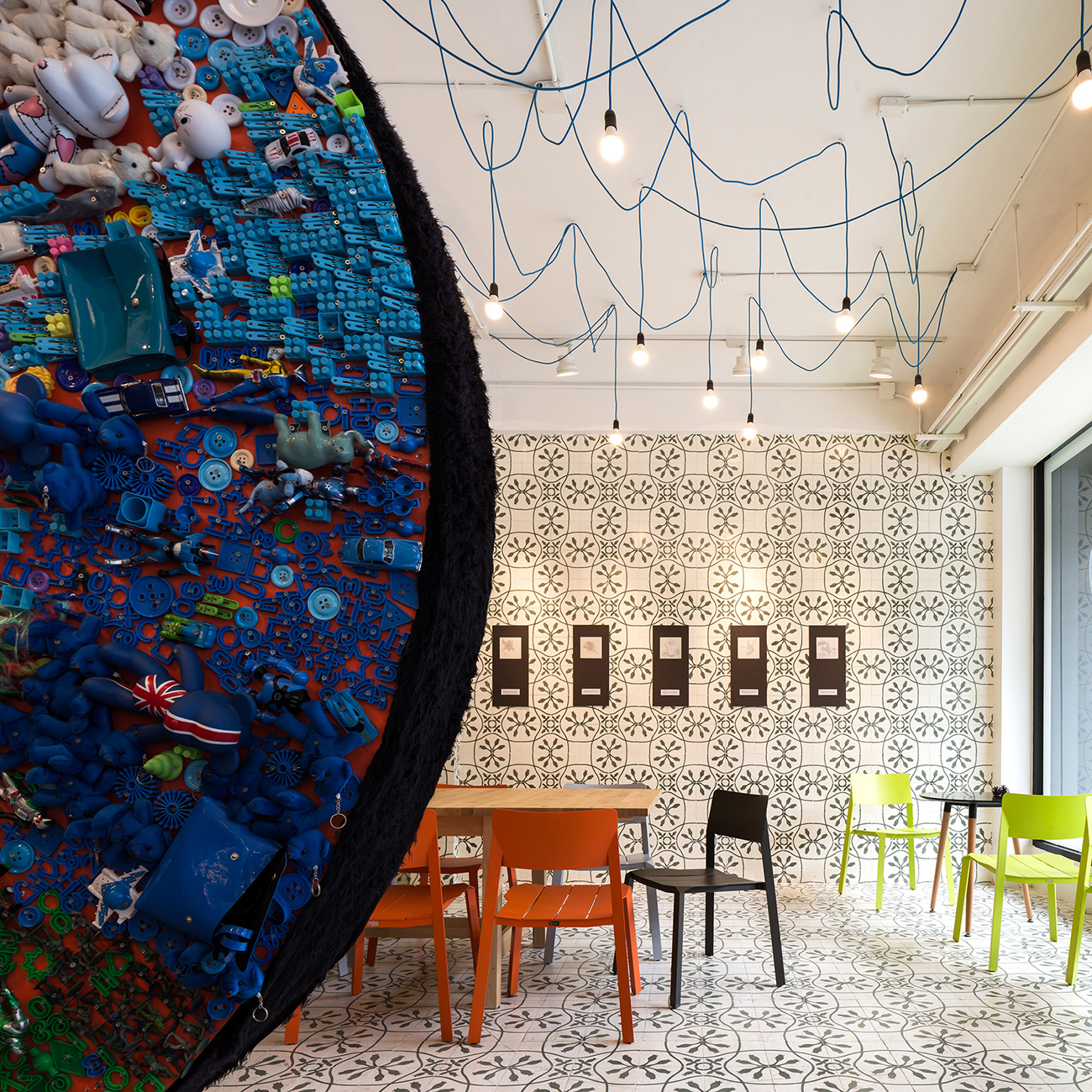
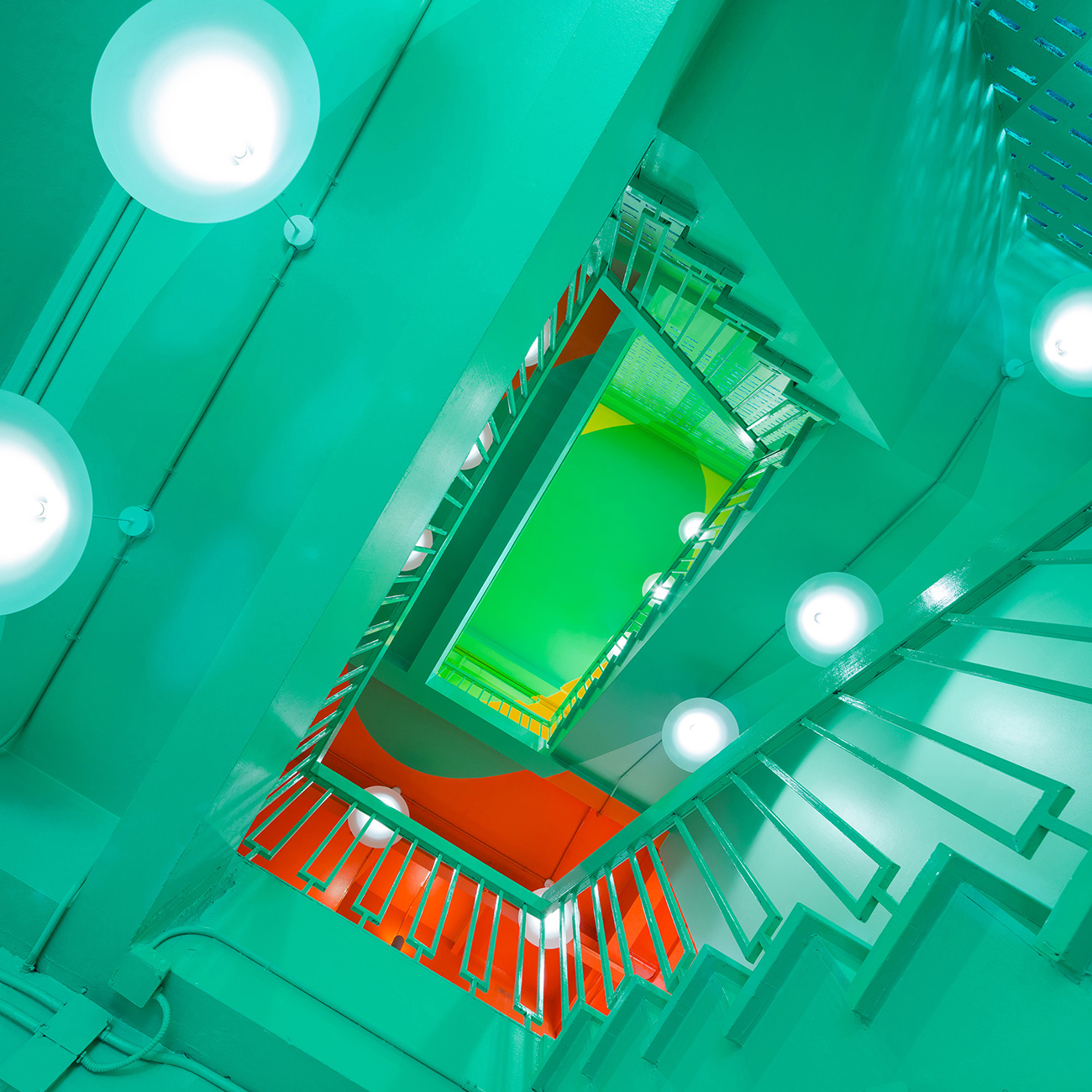
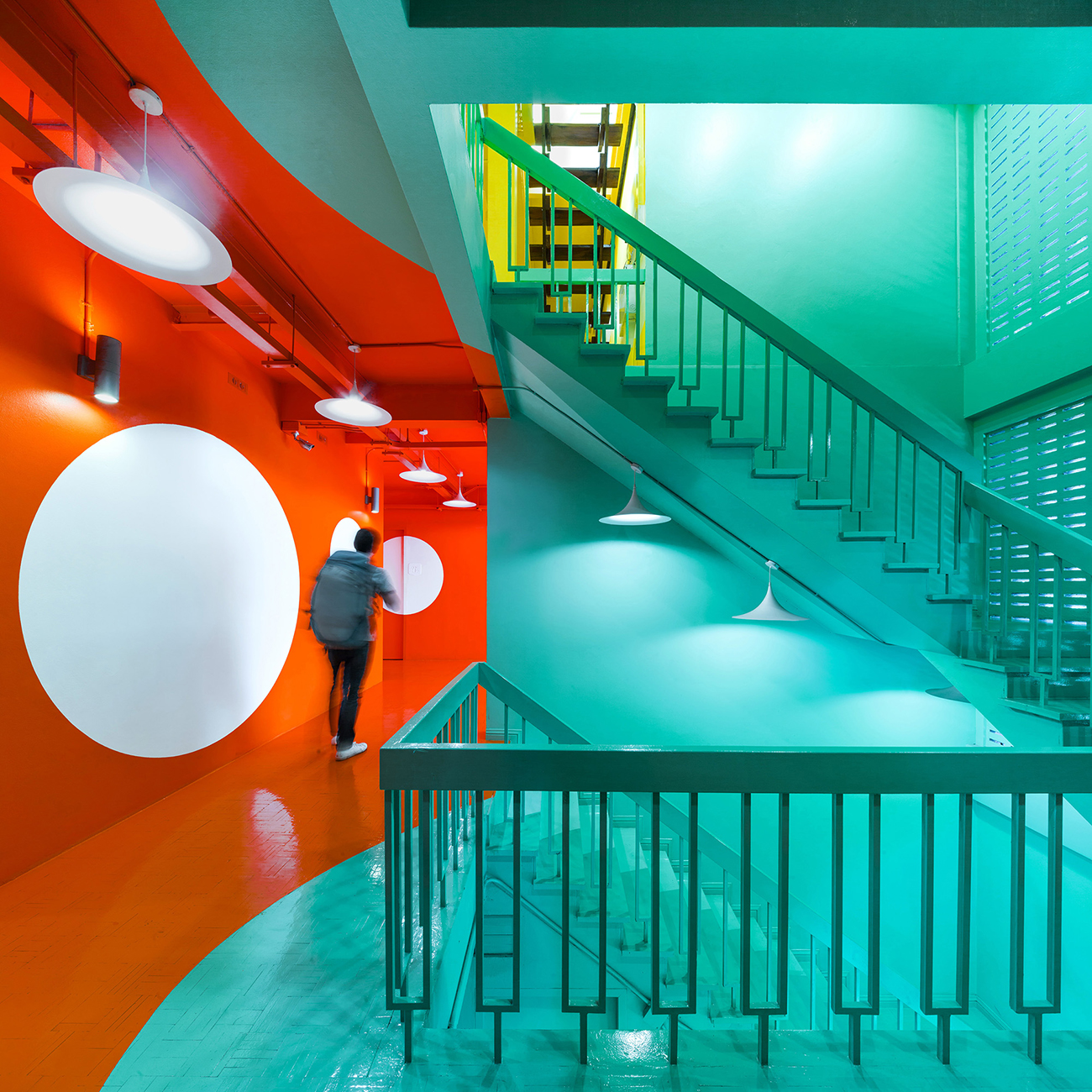
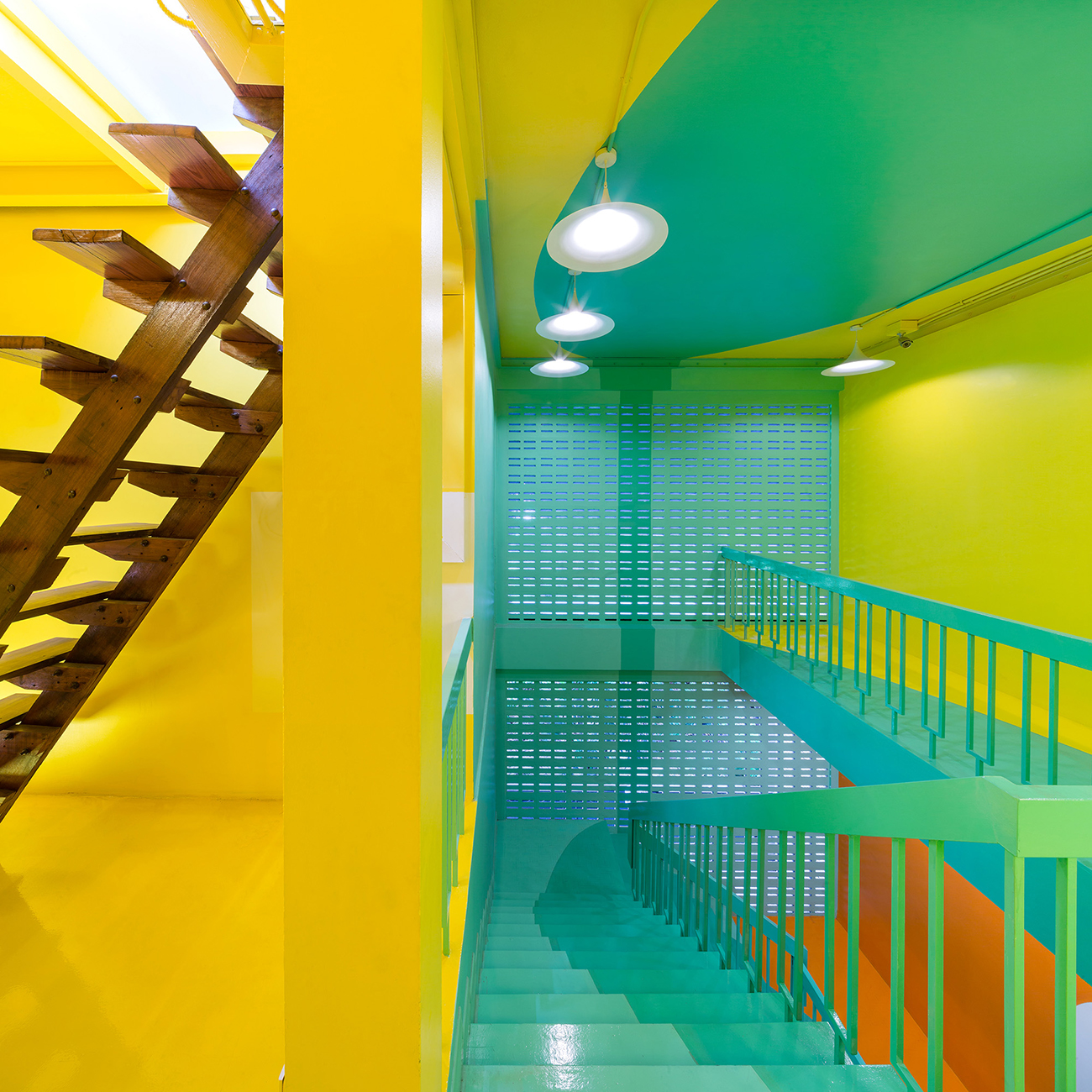
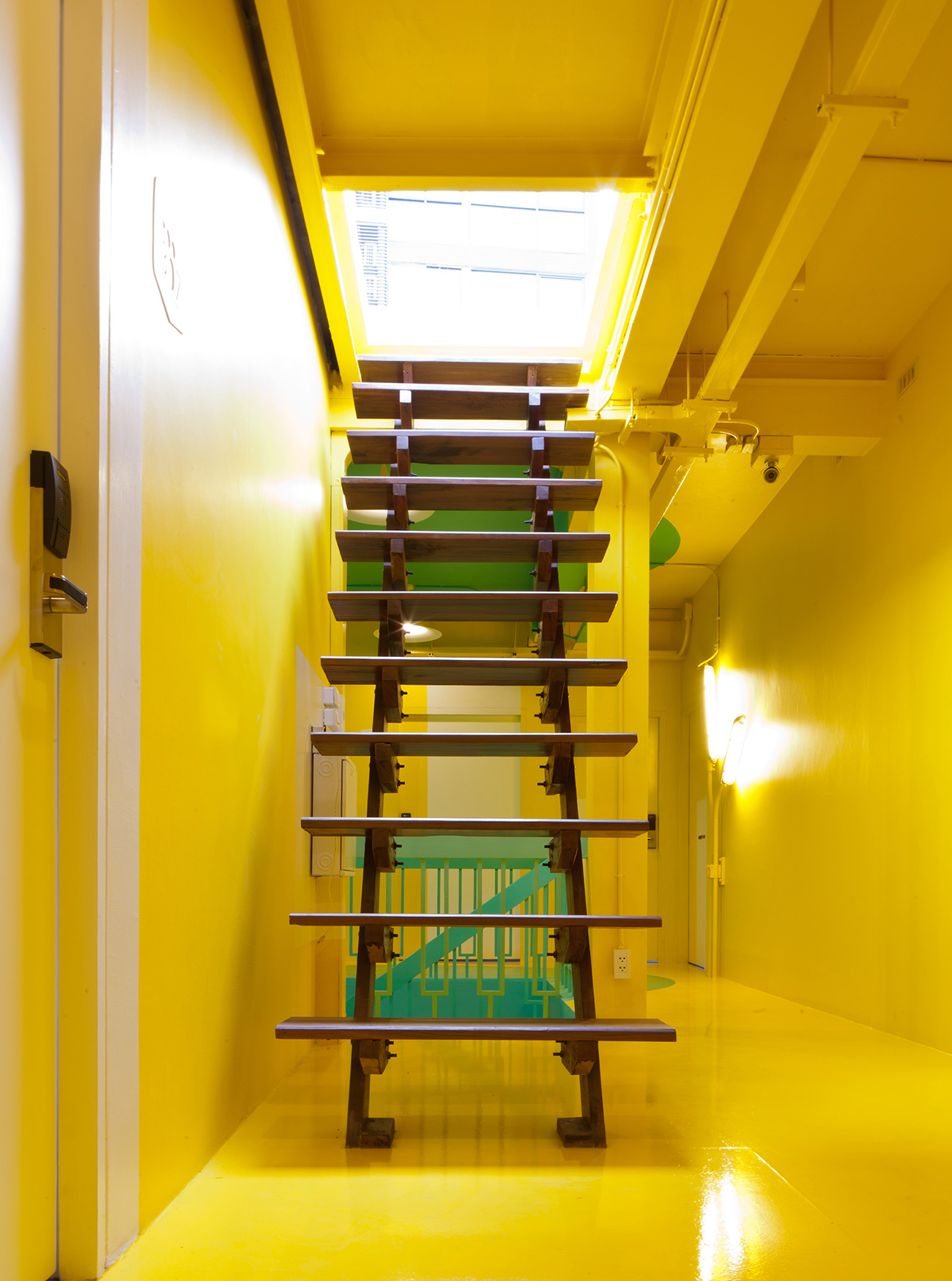
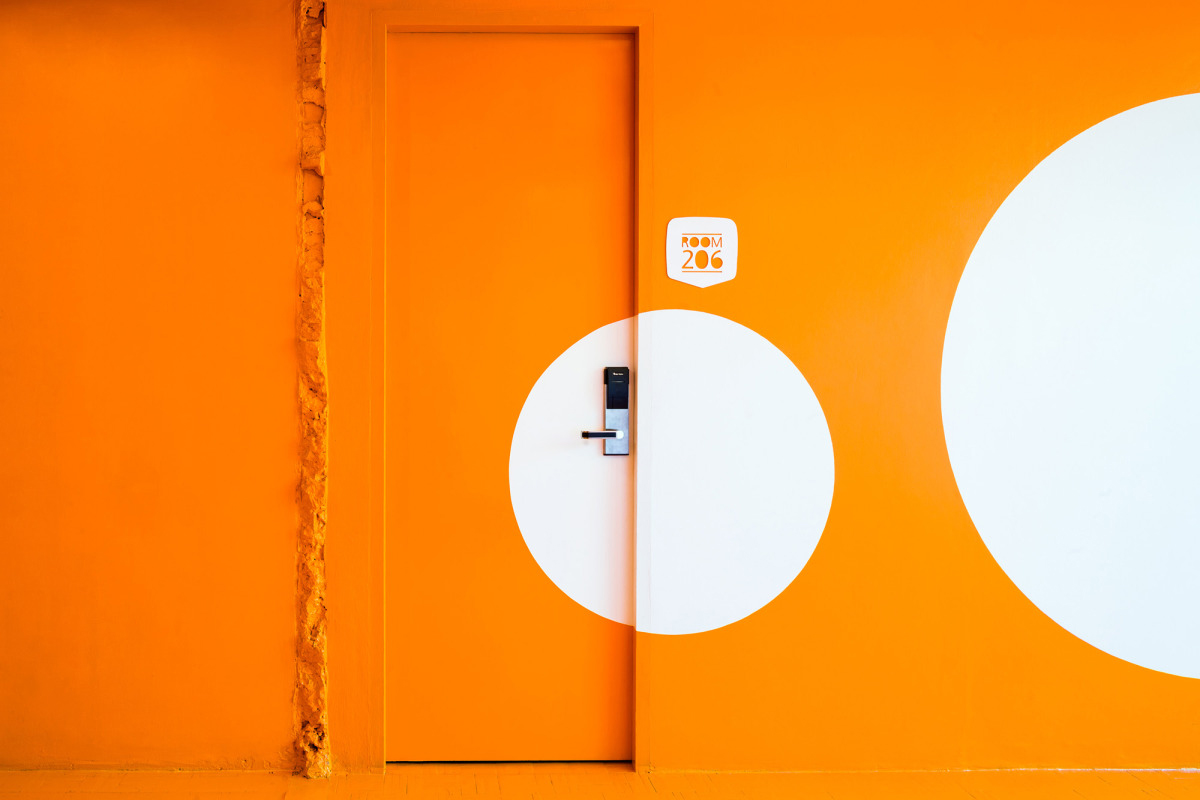

You Might Also Like:


